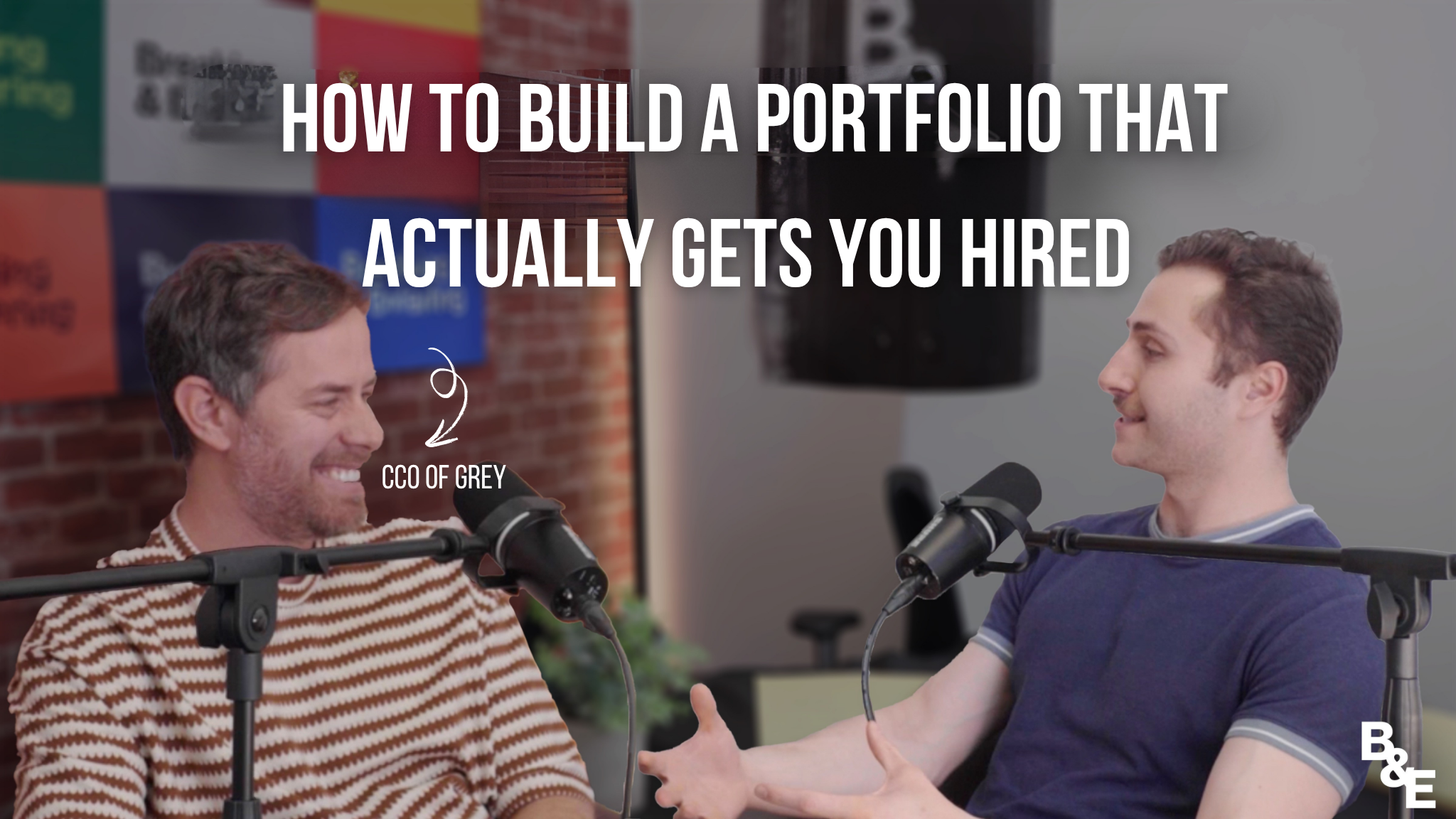How to Build a Portfolio That Actually Gets You Hired (From a CCO Who Hires)
"Don't be monotone. Show you can do a little bit of everything." That’s straight from Gabriel Schmidt, Global Chief Creative Officer at Grey, the man who helped FCB Chicago win its first-ever Gold Lion and now runs one of the top global networks in the industry.
In a recent episode of the Breaking and Entering Advertising Podcast, Schmidt pulled back the curtain on what creative leaders really look for in junior portfolios. His message was direct: great ideas matter, but range is what gets you in the door.
This article breaks down Schmidt’s most practical advice for portfolio-building, especially for aspiring copywriters and art directors who want to stand out in a stacked pile of junior talent.
You’re Not Just Showing Off. You’re Proving You’re Useful.
Most students think their portfolio is about showing their taste. Schmidt argues it’s more about showing your usefulness. If a CCO can look at your portfolio and see you helping their agency today—not in 5 years—you’re more likely to get hired.
“What people are looking for in interns is yes, you want to give them the chance to try their hand at different departments, but also to make sure you bring someone that’s going to be helpful,” Schmidt said.
So how do you do that? According to him, it’s not about building the perfect campaign. It’s about building a collection that demonstrates potential across different formats, tones, and types of thinking.
That means your portfolio shouldn’t have eight versions of the same joke or vibe. It should flex.
Show Range. Not Randomness.
“Even if you have eight things in your book, show diversity,” Schmidt advised. “A couple well-written things. A couple visually interesting things. Some film. Some social. Some weird stuff. Just show you’re exploring.”
But this isn’t about putting filler in your book. Every piece still needs a point of view. You can’t just throw spaghetti and hope something sticks.
The idea is to stretch your capabilities inside your discipline. A copywriter should still focus on writing. But writing for a billboard, a long-form film script, and a stunt idea are not the same thing. An art director should still focus on visuals, but explore static, motion, layout, and systems.
Range means different muscles, not random formats.
Clarity Gets You Chosen
Gabriel leads global teams. He’s seen hundreds of books. The ones that stand out are easy to navigate and get to the point quickly.
That’s because the people reviewing your book are busy. If your case study video is 2 minutes long, you’ve already lost them.
“You’re not applying for an award. You’re applying for a job,” Schmidt said. “Make it clear what the idea is. Make it clear what your role was. Make it easy to understand.”
That means short case study descriptions. A title that sells the idea. And a visual or headline that lands within 3 seconds. You don’t need a pitch deck. You need a punch.
Find a Partner. Build Shots on Goal.
Gabriel broke in at 18 by partnering with an aspiring art director in his class. They weren’t close at first, but teamed up, worked on spec campaigns together, and landed a joint internship at Euro (now Havas). That art director? He’s now CCO of Grey New York.
This is your reminder: the person sitting next to you could become your best friend and your creative partner for decades. Start working together now.
Use portfolio school briefs, competition briefs, brand ideas you invent, fake clients, or even made-up causes. Get shots on goal. You don’t need permission to build.
Don’t Wait for a Perfect Campaign. Just Start.
Schmidt didn’t wait until he had a polished portfolio. He started making things in school, joined a student agency, and learned by doing. That work led to an internship. The internship led to a junior job. The junior job led to a Gold Lion.
Too many students waste time tweaking their “one big campaign” instead of building a strong book with four to six pieces of smart, varied work.
You don’t need perfect. You need possible.
Final Thought: Be Useful Now
If you're applying to internships or entry-level jobs, ask yourself: does your portfolio show you’re useful right now? Can someone see your thinking and say, “I know where this person fits on our team”?
That’s what creative leaders like Gabriel Schmidt are really scanning for.
“Show diversity. Show thinking. Show that you care,” he said.
Start with four great ideas. Push each one in a different direction. Make it clear. Make it fast. Make it you.
And if you’re serious about breaking in?
Go listen to Gabriel’s full story on the Breaking and Entering Advertising Podcast.
Hear how he went from getting fired at 19 to leading global creative teams. Learn what he looks for in juniors, and how to build a legacy that lasts.
🎧 Listen now:
Watch on Spotify: https://open.spotify.com/episode/0GVpYDMDxWvhy4XnNMlM91?si=5wiC_G8uSc-aylTrF0cWrg
Watch on YouTube: https://www.youtube.com/watch?v=tOAmh73Dmdg&t=95s&ab_channel=Breaking%26EnteringAdvertising
Listen on Apple: https://podcasts.apple.com/us/podcast/breaking-and-entering-advertising-podcast/id1506434104
More from Breaking and Entering Media:
💼 Follow on LinkedIn
Daily insights, creative breakdowns, and industry news.
https://www.linkedin.com/company/breaking-entering-podcast/
📖 Read our Publications
https://www.breaking-entering.com/blog
💬 Join our Unlocked GroupMe
For aspiring advertising professionals and job announcements.
https://groupme.com/join_group/102437585/xg5Z5tei
✉️ Subscribe to The Vault
Our insider newsletter with real advice and deep dives.
https://breakingandenteringadv.substack.com/
📹 Subscribe to our :60 Advertising News Videos
https://breakingandentering.beehiiv.com/
🏆 Check out the Crowbar Awards to break into advertising
https://www.crowbarawards.com/
🤝 Work With Us
For sponsorships, custom content, or partnerships:
jack@breakenterpod.com

